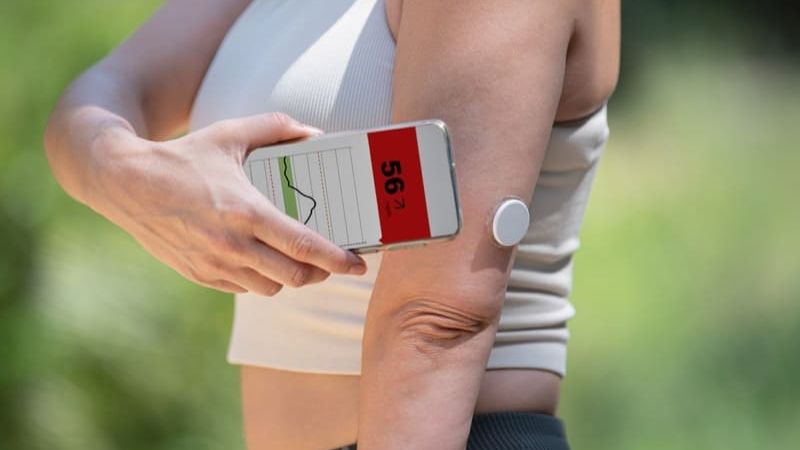

Our Review Process
Our articles undergo extensive medical review by board-certified practitioners to confirm that all factual inferences with respect to medical conditions, symptoms, treatments, and protocols are legitimate, canonical, and adhere to current guidelines and the latest discoveries. Read more.
Our Editorial Team
Shifa Fatima, MSc.
Author
Dr. Apoorva T, MHM.
MEDICAL ADVISOR
Applying CGM to your Fitness Training
Metabolic health measures how your body's cellular energy production engine successfully converts the food you eat into the energy you can use. You feel energetic and can easily maintain a healthy weight if you're metabolically fit. Your heart, kidneys, nerve cells, and white blood cells use glucose fuel. Carbohydrate foods like grains, starchy foods, milk products, fruits, and sweet foods like candy and soda contain glucose. Numerous carbohydrate diets contain many glucose or sugar molecules that enzymes must unlink in your intestines. The glucose is then absorbed and circulated in the body.
Table of Contents
Benefits of Blood Glucose Monitoring for Endurance
Many endurance athletes eat a high-carbohydrate diet to rebuild glycogen stores and boost energy and performance. This can have a favorable impact on the athletes' lifestyle. Unfortunately, there are occasions when an athlete's carb tolerance is limited, resulting in much higher blood sugar levels.
High-intensity physical training can cause a spike in blood sugar by releasing hormones such as adrenaline (epinephrine). If you don't eat before training, the effect of these hormones on enhancing glucose release from glycogen in the liver can be significantly greater. However, if you have a history of high blood sugar, adrenaline can cause glucose levels to spike to dangerously high levels, increasing your risk of cardiovascular disease. Glucose rises exceeding 180 can cause vascular damage, so keeping glucose levels below 180 during exercise is recommended to avoid any danger. Keeping track of glucose levels increases an athlete's quality of life. It also improves performance and energy levels.
Endurance athletes may train for long amounts of time, sometimes hours at a time. Low blood sugar can occur if they do not fuel properly before and during exercising. They may also get hypoglycemia, a condition in which their blood glucose levels drop too low, resulting in bonking or a visible decline in energy and performance. An athlete can use the CGM to monitor glucose dips or reductions during training and adjust their fuelling strategy accordingly.
CGMs can also help glycemic variability. Glycemic variability is a statistic that measures glucose swings that improve with exercise in most situations. However, if athletes are doing a high-intensity workout where their glucose levels are very high or a long-duration low-intensity training where their glucose levels are low, their glycemic variability may increase.
Applying CGM to your training
The first phase is learning how to use the in-app onboarding instructions and determining your baseline or "normal." You will start to understand ideal techniques to fuel during the prime, perform, and recover cycle. Once you know priming, performing, and healing nutrition as separate components, you'll be able to see how they interact and have flow-on impacts.
This is also the phase when an athlete can focus more on gut training. Higher carbohydrate intake (to cope with high energy demands during intense performances), as mentioned in the dietary periodization article, may require an athlete to 'train their gut' (expose it to increasingly higher carbohydrate loads in a periodized manner) to absorb fuel more efficiently and avoid gastrointestinal issues. The good news is that it is conceivable since we have seen athletes manage massive fuel intakes. On the other hand, it requires time, experience, and careful planning.
When you're at the last stages of the procedure, such as simulation or practice races, it's time to start putting your plans into action. This applies to both peak performance and how to maintain it. You should start calling your race day fuel strategy early in this phase. You'll need to test and fine-tune your plan for specific in-competition needs. This ensures that you can logistically get the amount of fuel you need for the race pace. Similarly, it will show you whether your planned diet is adequate to maintain a high and steady glucose level or if you need to adjust your fuel type, time, or amount.
During this phase, you'll be aiming to use the system to help with pre-race fuel store optimisation (maximising glycogen storage) and race-day nutrition plan. We can help you validate and iterate on the model developed at lower levels of your pyramid, whatever your fueling approach is. If you have access to your glucose data, this is useful.
Following the race, you should, as with training, reflect on your strategy. After the race, you can analyse how your fueling strategy affected your performance and improve your fueling plan for the next race (which you will practice and refine during the next training cycle). This could entail additional gut training—alternatively, a fuel change. Alternatively, you could influence your recovery and prime dietary plans.
For a variety of reasons, glucose monitoring can aid athletic performance. For starters, it's a less invasive and time-consuming means of measuring glucose than other methods. Before CGM technology, athletes used a finger-prick gadget to check their blood glucose levels (glucometer).
Bottomline
It's vital to remember that everyone is different and will react to carbohydrates in their way. The CGM is a beneficial tool for some athletes, but not for all. It's not a blood sugar management device; rather, it allows the doctor, dietician, and athlete to monitor blood sugar levels, even during a workout. It allows players to make dietary and training decisions that will help them improve their performance while reducing the metabolic health concerns associated with high or low blood sugar.

Disclaimer
This website's content is provided only for educational reasons and is not meant to be a replacement for professional medical advice. Due to individual differences, the reader should contact their physician to decide whether the material is applicable to their case.






_1lAR9W.png)
_Z12iaBn.png)
